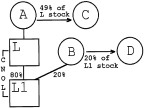The House GOP Bill is out and tax professionals across the globe are reading and re-reading the 429 pages of details. A few of the many things that jump off of the pages for me are that it doesn’t seem to support working families with kids (it REPEALS the up to $5,000 exclusion from gross income for dependent care assistance that many working parents use to subsidize the skyrocketing costs of child care while they work) or even those who (like my fantastic law students at UNLV) are pursuing and paying for higher education.

Not kidding readers, the Act REPEALS (1) above the line deductions under IRC Sections 221 and 222 for qualifying higher education loan interest (up to $2,500) and tuition and fees (up to $4,000); (2) the $2,000 Lifetime Learning Tax Credit for any post-undergraduate education (e.g., law school, MBA, Ph.D., etc.) under Section 25A (while the Act retains the $2,500 partially refundable American Opportunity Tax Credit for 5 years (5th year is only 1/2 credit) of undergraduate you now must have a Social Security number issued before the due date of the tax return that allows you to work to qualify for this credit); (3) Coverdale Educational Savings Accounts Section 530; (4) Section 127 exclusion for employer provided higher education benefits of up to $5,250; (5) exclusion for interest on certain savings bonds under Section 135; and (6) unreimbursed employee business expenses such as qualifying education, etc., etc., etc. But don’t despair students, because parents can now fund a tax-favorable Section 529 plan for an unborn child. ‘‘(i) IN GENERAL.—The term ‘unborn child’ means a child in utero. (ii) CHILD IN UTERO.—The term ‘child in utero’ means a member of the species homo sapiens, at any stage of development, who is carried in the womb.’’ 
But I digress, hard not to when reading this slash and burn tax Act. Back to kids, well personal and dependency exemption deductions are repealed (2018 amount of $4,150), but the standard deduction amounts are increased. The standard deduction amounts have been increased (not quite double the 2018 amounts of $13,000 (MFJ) and $6,500 (Single)) to $24,400 for married filing jointly couples, $12,200 for unmarried individuals, and $18,300 for heads of households. But the additional standard deduction amounts for blind and/or aged individuals have also been repealed. So seniors and blind individuals receive the same standard deduction amount as all other taxpayers. This obviously reduces the combined deduction (that is, “zero bracket amount”) for families with more than one child. While there is a new $300 tax credit in lieu of personal and non-children dependents exemption deductions, it is entirely NONREFUNDABLE (must offset an income tax liability) and expires in 2023.
In addition, the Child Tax Credit has been increased to $1,600 from $1,000 (but it is not immediately refundable; $1,000 of the $1,600 is potentially refundable (generally to the extent of earned income above $3,000)).
 The amount that is refundable is the same as under current law of only $1,000, but now the refundable amount is indexed for inflation (rounded up for any amount above $1,000 in $100 increments) annually. HOWEVER, the increase in the credit of $600 EXPIRES in 2023 while the personal and dependency exemption deduction repeal is permanent. The Center on Budget and Policy Priorities (CBPP) has determined that because the additional CTC is not immediately refundable 11 million of our most vulnerable children who live in low-income households will not get ANY of the additional CTC. And another 13 million children will only get a partial amount, averaging $200, because their families have too little earned income. Yet, the Act increases the number of higher income families who will qualify for the increased CTC because the phase-out threshold has been increased to $230,000 for married taxpayers.
The amount that is refundable is the same as under current law of only $1,000, but now the refundable amount is indexed for inflation (rounded up for any amount above $1,000 in $100 increments) annually. HOWEVER, the increase in the credit of $600 EXPIRES in 2023 while the personal and dependency exemption deduction repeal is permanent. The Center on Budget and Policy Priorities (CBPP) has determined that because the additional CTC is not immediately refundable 11 million of our most vulnerable children who live in low-income households will not get ANY of the additional CTC. And another 13 million children will only get a partial amount, averaging $200, because their families have too little earned income. Yet, the Act increases the number of higher income families who will qualify for the increased CTC because the phase-out threshold has been increased to $230,000 for married taxpayers.

Example: The CBPP calculated that a single mother making minimum wage with two kids would get ZERO increased CTC while a family making $200,000 would get an increase in their CTC of $3,200 compared to existing law (they were completely phased out before and now they get the full amount of the enhanced CTC for both children).
 The Act actually excludes even more vulnerable children from the CTC, because only families in which at least one parent has a Social Security number that authorizes work can receive any amount of refundable CTC. So U.S. citizen and other U.S. resident children must have at least one parent who is authorized to work and has a Social Security number issued before the due date of the tax return, to receive any amount of CTC. This new provision excludes 5 million children from receiving any CTC.
The Act actually excludes even more vulnerable children from the CTC, because only families in which at least one parent has a Social Security number that authorizes work can receive any amount of refundable CTC. So U.S. citizen and other U.S. resident children must have at least one parent who is authorized to work and has a Social Security number issued before the due date of the tax return, to receive any amount of CTC. This new provision excludes 5 million children from receiving any CTC.
When will Americans learn that there is no better financial, moral, or rewarding investment than investing in our most challenged children. We must do better than this ….. these kids are depending upon us and we are failing them, they are our future and our best hope for a better tomorrow .
. 

